Best LMS in India 2025 — Top Learning Management Systems (LMS) for Corporate & Education (Compare Features, Price & Demos)
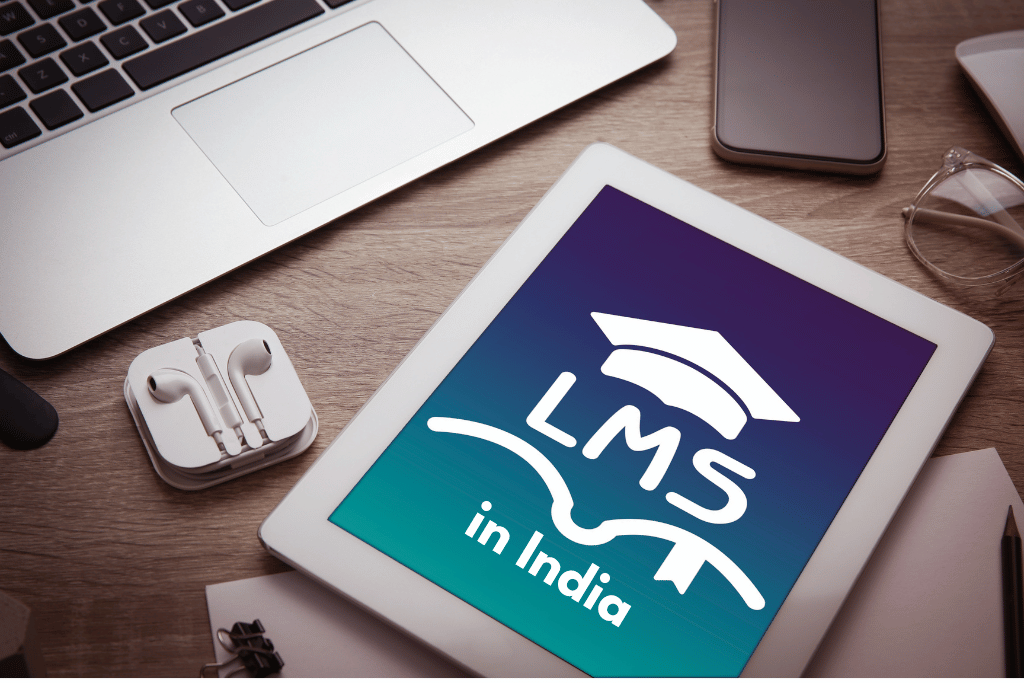
Finding the right Learning Management System (LMS) can feel overwhelming — especially in India’s fast-growing market where organizations from startups to enterprises are scrambling to upskill, comply with regulations, and deliver flexible learning across geographies. The rapidly evolving hybrid and remote working culture makes it even more critical to adopt a digital approach to continuous learning.
This guide will walk you through the best LMS platforms in India in 2025, compare features, pricing, use-cases, and help you choose the right one for your needs.
What Is an LMS and Why It Matters in India (2025)
A Learning Management System (LMS) is software that lets you deliver, track, manage, and analyze educational or training content. Key functions often include course creation, user management, assessment/quizzes, certifications, reporting & analytics, content integration (SCORM/xAPI), mobile learning, and sometimes social or collaborative features.
In India, the importance of LMS platforms has surged, due to:
Remote & hybrid work/learning: Post-pandemic, many companies and educational institutions have adopted hybrid models. LMSs let employees or students access content anytime, anywhere.
Upskilling & workforce readiness: With rapid technological change — AI/ML, data science, automation — organizations across sectors are forced to reskill or upskill. Government initiatives (Skill India, National Education Policy) also push for better digital infrastructure.
Regulation and compliance: Firms in finance, pharmaceuticals, manufacturing, ESG compliance, etc., need records, tracking, certifications. A good LMS ensures audit-readiness.
Scalability & cost concerns: Growing teams and learners mean that Indian organizations need systems that scale without exploding costs, provide multilingual support, mobile‐friendly delivery, and integrate with existing tools (HR, CRM).
Emerging technologies: AI-driven content recommendations, analytics/predictive learning paths, microlearning, gamification are now differentiators. Users expect slick UI, good user experience, mobile app, offline access.
So choosing the right LMS matters deeply — not just feature-rich, but cost-effective, usable, well-supported, and aligned with real use-cases.
How We Evaluated the Best LMS Platforms in India
To ensure this list is reliable and genuinely useful, here are the criteria and methodology we used:
Criterion | Why It Matters |
|---|---|
Ease of Use & UI / UX | If it's hard to use, adoption suffers. Learners & admins both should find it intuitive. |
Scalability | From small teams to large enterprises — the LMS should grow without performance/price exploding. |
Feature Depth | Core features like assessments/quizzes, certificates, content import (SCORM / xAPI), social/collaborative learning, mobile/offline access. |
Integrations & APIs | Integration with HRMS/Payroll/SSO, CRM, content libraries, webinar tools etc. Makes life easier. |
Analytics, Reporting & Security | Real-time dashboards, compliance, data privacy (especially in India), audit trails. |
Localization & Support | Multilingual, local payment options, timezone support, good customer support. |
Pricing Transparency & Cost of Ownership | Not only subscription cost but hidden costs: implementation, localization, maintenance, mobile app etc. |
We reviewed 30+ LMS platforms used in India by corporations, educational institutions, startups, and SMEs. We gathered feature lists, user feedback, trial walkthroughs, pricing data (where available), demos, and customer reviews. We also gave weight to recent innovations like AI-based recommendation engines, gamification, mobile/offline access, and content authoring tools.
Quick Comparison — Top LMS Platforms in India (2025)
LMS Platform | Best For | Key Features |
|---|---|---|
Modern workforce upskilling (enterprises & SMBs) | AI content curation; skills gap mapping; mobile-optimized; robust integrations | |
Docebo | Enterprise training, compliance, global teams | AI-driven UX, deep analytics, multilingual, compliance features |
SAP Litmos | Large corporations & regulated industries | Security/compliance; extensive integrations; global support network |
Absorb LMS | UX-focused midsize/large firms | Excellent UI; mobile & offline; blended learning; strong support |
LearnUpon | Remote teams / SaaS companies / training providers | Multi-tenant; content authoring; good analytics; learner engagement tools |
Moodle | Educational institutions / low-budget usage / open source fans | Highly customizable; strong community; SCORM; mobile apps |
Edmingle | Training institutes, smaller organizations in India | Indian pricing; easy content upload; good support; decent core features |
360Learning | Collaborative / peer learning / upskilling focus | Social learning; peer review; collaborative content; good UX |
TalentLMS | SMBs; simple & fast implementation | Cloud-based; mobile; easy setup; integrations; multi-tenant options |
Blackboard Learn | Academic institutions; universities | Strong academic tools; rich assessment & accreditation; global, but less “modern UX” feel |
10 Best LMS Platforms in India (2025 Detailed Reviews)
Here are deeper reviews of what each platform does especially well, how it may fall short, and which use-cases it’s best suited for.
1. Calibr.AI — Best AI-Driven LMS for Corporate Upskilling
What it does well:
Skill gap mapping & learning paths: Calibr.AI analyses employee skills (via assessments / performance data) and recommends learning paths to close gaps.
AI content curation & suggestion: Helps administrators plan what content will have the most impact; suggests microlearning modules etc.
Modern UX and mobile-first design: Clean, intuitive interface; strong mobile app; supports offline content consumption.
Strong integrations: HRMS, SSO/LDAP, webinar tools, content libraries.
Localized support & pricing: Indian teams get better onboarding; transparent pricing tiers for SMBs and scaling enterprise.
What could be better:
Implementation may take some customization depending on company size.
Some advanced analytics / reporting features may require higher-tier plan.
Best for: Medium to large enterprises, training providers, organizations invested in upskilling and needing predictive or AI-powered tools.
Pricing: Starts ~ ₹120/user/month for base plans; enterprise pricing depends on number of users, features, support.
2. Docebo — Enterprise LMS with Global Reach
Docebo is an AI-powered, enterprise-grade LMS designed for large organizations seeking scalable corporate learning. It features personalized learning paths, multi-language support, social learning tools, and robust integrations with HR and business systems. While highly scalable and feature-rich, it comes with a steeper learning curve and higher cost compared to simpler LMS platforms.
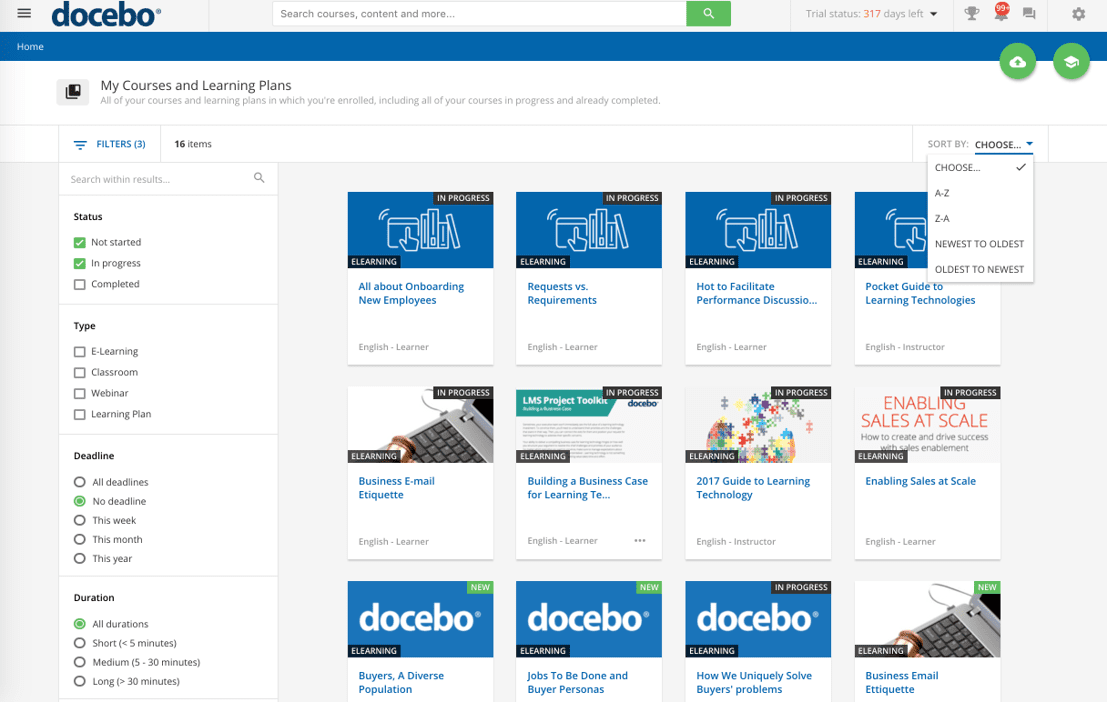
Strengths:
Excellent for large organizations with complex training needs.
Deep analytics & dashboards, AI features (recommendations etc.), multilingual support.
Security & compliance features are strong.
Drawbacks:
Cost tends to be higher; small or mid-sized companies may find it expensive.
Some Learning Path/customization may require training or consultation.
Best for: Enterprises, regulated industries; multinational companies with multiple geographies.
3. SAP Litmos — Secure LMS for Corporate Compliance
SAP Litmos is a cloud-based LMS designed for enterprises with global training needs and is good learning management system for India. It offers compliance-ready templates, gamification, assessments, and SCORM/xAPI support, making it ideal for structured corporate learning. While trusted by large organizations, its user interface can feel dated, and pricing may be high for small to mid-sized businesses.
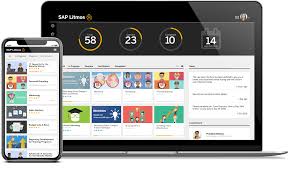
Very strong in compliance, security, enterprise-grade stability.
Extensive integration ecosphere (especially useful if you already use SAP or connected systems).
Large vendor, long track record.
Weaknesses:
Less nimble UI compared to newer players; may feel heavy for smaller organizations.
Pricing often includes extras; transparency can be lower unless you request full breakdown.
Best for: Enterprises where compliance, auditing, global consistency is vital—e.g., manufacturing, pharma, BFSI.
4. Absorb LMS — Great UX and Mobile-First Approach
Absorb LMS, another popular lms in India, is a flexible, scalable learning management system suitable for mid-to-large enterprises. It offers AI-driven learning recommendations, robust reporting, eCommerce integration, and SCORM/xAPI support. While it provides a modern and attractive user interface, some users find the admin interface complex, and pricing is higher than simpler LMS platforms.
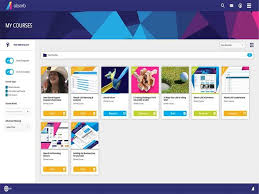
Modern look & feel; good mobile app, offline features.
Good blended learning capabilities.
Support & onboarding tend to be strong.
Weaknesses:
Some advanced customization or very niche workflows may require workarounds.
Maintenance & admin overhead may increase with size.
Best for: Organizations that value learner experience highly; mid-to-large size; mobile learning-heavy content.
5. LearnUpon — Reliable LMS for Remote Teams & Training Providers
LearnUpon, a popular LMS, is a cloud-based LMS ideal for organizations delivering training to multiple audiences, including employees and customers. It offers multi-tenant capabilities, SCORM/xAPI support, robust reporting, and a mobile-first design. While easy to deploy and use, it has limited customization compared to Moodle and some enterprise-grade LMS platforms.
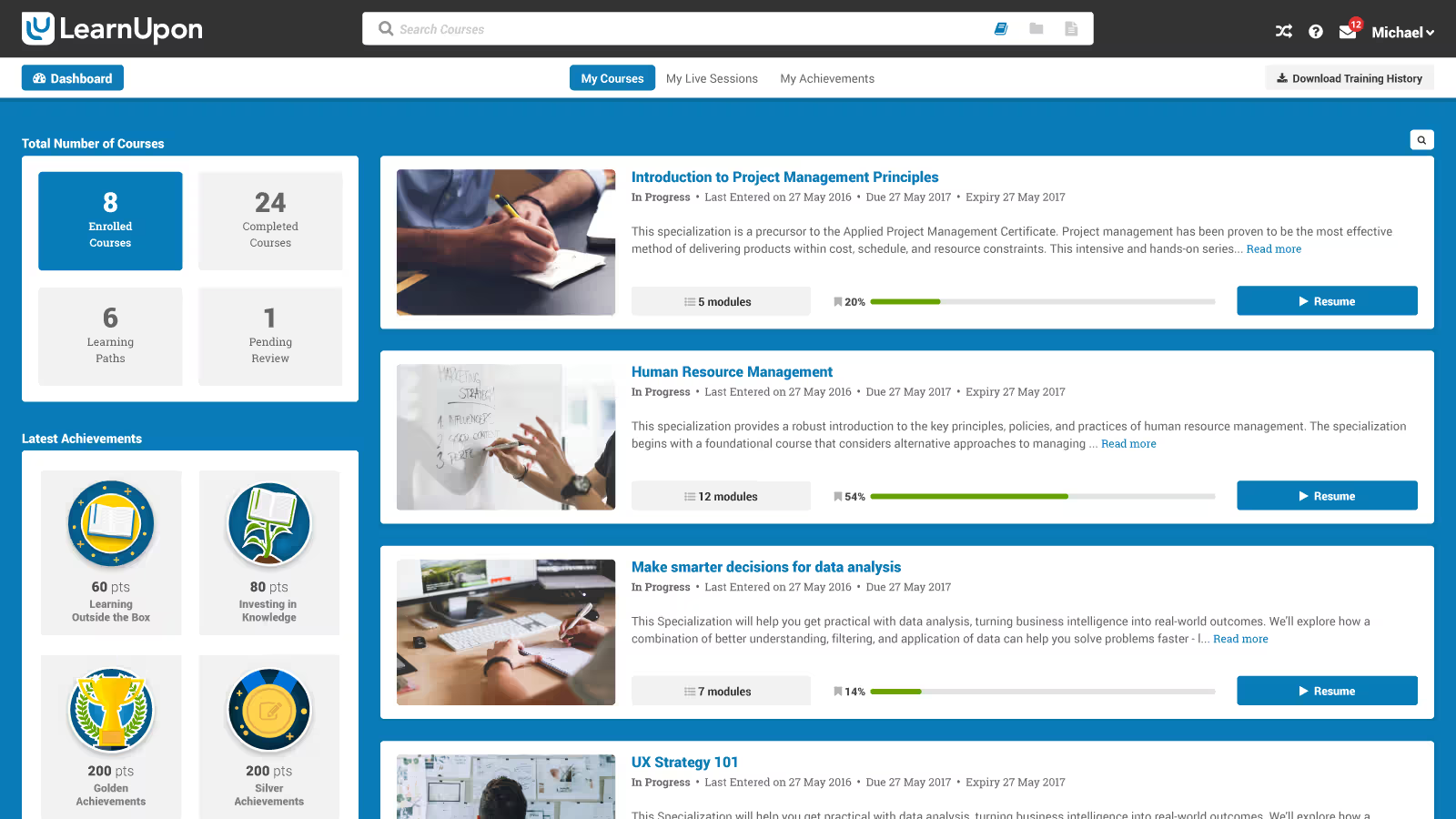
Good at delivering scalable training, especially for remote / distributed teams.
Strong multi-tenant capabilities (if you run multiple brands or external training).
Solid reporting and support.
Weaknesses:
Pricing per-user or per active learner may add up.
Less focus on open source; less flexibility for total customization.
Best for: SaaS companies, remote teams, partner training, customer / external training programs.
6. Moodle — Best Free Open-Source LMS (for Education)
Very strong community and plugin ecosystem.
Great choice for colleges/universities who need customization, want control over hosting, and have in-house technical support.
Cost of software minimal; other costs are hosting, maintenance, plugins.
Weaknesses:
UX/UI sometimes less polished out of the box compared to modern SaaS LMSs.
Setting up, customizing, maintenance, security updates require technical expertise.
Less focus on corporate use-case features (though many extensions exist).
Best for: Educational institutions, NGOs, schools, universities; organizations with in-house technical resources; low-budget setups.
7. Edmingle — Emerging Indian LMS for Training Institutes
Indian vendor; cost structures more aligned to local budgets.
Easier local support; possibly better localization (language, payment, pricing).
Good core feature set for smaller institutions.
Weaknesses:
Might lack some of the advanced features large enterprises demand (deep analytics, AI).
Scaling to tens of thousands of users may expose limits.
Best for: Smaller training institutes, coaching centres, SMEs, organizations preferring local support.
8. 360Learning — Collaborative Learning & Peer-Based Approach
Focuses more on social / collaborative learning: peer reviews, user-generated content.
Good for knowledge sharing and organizational learning culture.
Modern interface and good learner engagement tools.
Weaknesses:
May not match some of the compliance and reporting depth of enterprise-focused LMSs.
Pricing often mid to high; features beyond core collaborative tools require upgrades.
Best for: Companies wanting to build peer learning, continuous learning culture; tech companies; HR/L&D driven organizations.
9. TalentLMS — Simple Cloud LMS for SMBs
Very easy to set up, simple administration.
Cloud-based; minimal infrastructure concern.
Good value for features vs cost for small / mid clients.
Weaknesses:
Fewer advanced features (such as deeply domain-specific compliance, or extremely large scale deployments).
UI/UX good but less customizable compared to enterprise LMS.
Best for: SMBs, startups, external training/partners, quick implementation needed.
10. Blackboard Learn — Strong Academic LMS
Rich tools for academic workflows: advanced assessments, accreditation, discussion boards, student engagement tools.
Tried and tested in many universities.
Weaknesses:
Often perceived as more traditional; sometimes less modern UX or slower feature updates.
More suited for academic than corporate L&D out of the box.
Best for: Universities, colleges, educational institutions, large academic programs.
LMS by Use Case — Find the Right Fit for Your Needs
Use Case | Top Picks | Why They Work |
|---|---|---|
Corporate Training | Calibr.AI, SAP Litmos, Absorb, Docebo | Strong compliance, integrations, analytics, support for remote/hybrid models. |
Educational Institutions | Moodle, Blackboard, TalentLMS | Academic tools; open source; accreditation & grading; student group management. |
Small / Medium Businesses (SMBs) | TalentLMS, Edmingle, LearnUpon | Affordable pricing; easy deployment; minimal admin overhead. |
Enterprise / Regulated Industries | Docebo, SAP Litmos, Absorb | Security, audit, global compliance, SLA support, scalability. |
Remote / Distributed Teams | LearnUpon, Calibr.AI, Absorb | Cloud based, mobile app, offline support, global access. |
Coaching / Training Institutes | Edmingle, TalentLMS, Moodle | Local support, flexible content authoring, budget alignment. |
Key Trends in India’s LMS Market (2025)
Being aware of where the market is going helps you choose a platform that’s not just good now, but will evolve well.
AI & Personalization
More LMSs are integrating AI for content recommendation, predicting skill gaps, adaptive learning paths. Calibr.AI and some others lead here.Microlearning & Bite-sized Content
Learners prefer shorter modules, mobile-friendly content, and quick knowledge bursts. Convenient in remote/hybrid setups.Mobile / Offline Access
Critical for learners in areas with spotty connectivity; offline download, mobile app performance are becoming standard expectations.Data, Analytics & Learning Insights
Organizations want measurable ROI. Real-time dashboards, metrics on learner engagement, course completion, performance, skill acquisition.Integration & Ecosystem Connectivity
Integration with HRMS, CRMs, communication tools (Teams, Slack), webinar tools, content libraries — reduces redundancy and friction.Multilingual & Localization
Indian companies, especially in Tier-2/3 cities, need LMSs that support multiple languages, local payment gateways, local support.Gamification & Social / Collaborative Learning
Learners stay more engaged with leaderboards, peer feedback, social discussions, user-generated content.
How to Choose the Right LMS for Your Organization
Use this as a checklist when you evaluate LMS options. Don’t pick based on features alone — matching use-case, culture, and future growth matters.
Define Your Learning Goals & Objectives
What are you trying to achieve? Employee upskilling? Compliance? Coaching? Hybrid/remote training? Knowing this shapes your feature priorities.Map Your Current Systems & Integrations
You may already have HRMS, payroll, single sign-on (SSO), content authoring tools. Ensure your LMS can integrate or else you’ll face friction.Evaluate Learner Experience
UI/UX quality, mobile app, accessibility, offline support. A great LMS will reduce drop-off simply because it’s easy to use.Check Reporting, Analytics & Feedback Tools
Can you measure what matters? Engagement, completion rates, skill improvements, ROI. Good analytics = better decisions.Trial Periods & Onboarding Support
Use demos/free trials to see what the platform feels like. Also evaluate vendor’s support, local presence, training, customer success.Scalability & Total Cost of Ownership
Consider growth: more users, more languages, more content. Think long term — hidden costs, maintenance, server scaling etc.Security, Compliance & Data Privacy
Especially if you deal with sensitive data. Certifications (ISO, GDPR, local Indian laws), backup, uptime SLAs.Localization & Flexibility
Language support, payment in local currency, local support team, adapting to Indian usage habits.
FAQs — LMS in India (2025)
(These are the most commonly asked questions by enterprises & educators.)
Q1. Which is the best LMS in India?
There’s no one-size-fits-all answer. The best LMS depends on your priorities — size of your organization, budget, need for compliance, user experience, integrations, and future growth. For many enterprises, Calibr.AI, Docebo, or SAP Litmos are strong picks. For educational institutions or schools, Moodle or Blackboard may be better suited.
Q2. What is the cost of an LMS in India?
Pricing varies widely. Basic plans can range from ₹80 to ₹200 per user per month for SMBs with core functionality. Mid-tier LMS platforms often cost ₹200 to ₹800 depending on features. Enterprise-grade platforms with custom integrations, high user bases, advanced analytics, and compliance will often require custom pricing, sometimes into several lakhs per year.
Q2. Are there any Free LMS in India?
Yes, there are several free LMS options available in India. Many organizations, especially startups and educational institutions, use Free LMS platforms in India like Moodle, Google Classroom, and Calibr Free Plan to manage online learning and employee training. These platforms offer essential features such as course creation, learner tracking, assessments, and progress reports at no cost. While free LMS solutions are great for small teams or pilot programs, businesses looking for scalability, customization, and support often upgrade to paid LMS versions for advanced analytics, branding, and integrations.
Q3. Which LMS is best for corporate training?
Look for platforms that offer skill-gap mapping, learning paths, content recommendations, good analytics, mobile/offline support, and strong support. Calibr.AI and Docebo are excellent in this domain.
Q4. Is Moodle suitable for companies?
Yes — but with caveats. Moodle is open-source and highly customizable. If you have technical resources, you can adapt it well. But out of the box, some UI/UX and modern features may need plugins or customizations. Also, hosting, maintenance, security updates need ongoing management.
Q5. How do I choose the right LMS for my organization?
Use the checklist above: define goals → map integrations → evaluate learner experience → measure reporting & analytics → test trial/demos → plan for scalability & cost → ensure security & localization.
Conclusion
India in 2025 is a mature and rapidly evolving LMS market. Organizations that invest wisely in a learning platform aligned with their learning goals, growth plans, and user expectations will gain an edge. The best LMS for you is the one that balances features, cost, UX, and support, and which lets you scale without locked-in limitations.
If you’re evaluating options now, try this:
Start with a needs assessment (use the checklist above),
Use free trials or demos (including with your own content),
Compare several vendors side by side (feature, cost, support, user feedback).
Calibr.AI offers a free trial and full demo; it’s built to adapt to today’s learning environment — AI-powered, mobile first, and suitable for both SMBs and enterprises. If you’re ready to see how it might work for your team, we can walk you through the demo and help pick the plan that makes sense.

Dr Aditi Swaroop, a seasoned doctor who transitioned into the dynamic world of Learning & Development. Her professional journey is a fascinating blend of medicine & corporate landscapes, allowing her to draw insightful parallels between the two. She writes occasionally, offering a fresh perspective on professional growth & development.
